| PEOPLE |
YEAR: 1979
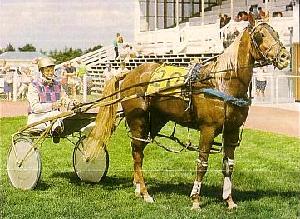 |
| Lorraine Grant with Rainbow Patch |
"Once I was in the cart I was as good as gold. Before then I knew that all eyes would be on me...if I made a mistake, everyone would see it." That was how Lorraine Watson summed up those minutes before her first race as a fully licenced driver at Methven last Tuesday. She needn't have worried, even though Lorraine and her charge Lord Burlington finished only ninth in the first leg of the double. She tried to get Lord Burlington out into the clear at the start but was forced to change her plans when Wanda Bye went into a gallop along side her. From then on she sat back on the rails with Lord Burlington running on "as well as expected" in the straight.
The most nerve-wracking part of the day was yet to come. Immediately after the race, amid the flurry of well wishers and friends, there were the inevitable television and radio interviews for the South Island's first woman to drive in a tote event. "That was worse than the race. I suppose I was a bit shy and was worried about what I was going to say. Thank goodness, it happens only once," she said later. She actually drove her other representative, Hydro Byrd, into the money in the final event on the day. Hydro Byrd began like a rocket from the outside of the second line, and avoiding a slight mix-up at the start, was soon in the lead. For a long time down the straight it looked as though Lorraine might do the trick for her hometown crowd but, sticking on well, fourth was the best she could manage. Still, she got some of the money to cap off her day. "I always get on well with Hydro Byrd," Lorraine said. "I've won a lot with her at work-outs and trials. In fact, I have few problems with either horse."
Lorraine has had a licence to drive at matinees and trials for about a year now. But she has been "totally involved" with trotting ever since her marriage to the late Murray Watson fifteen years ago. But she has always liked horses, spending all her holidays on a farm, before then riding the ponies at Caroline Bay, Timaru. She used to go with her parents to as many race meetings as she could, too.
An aunt, Rita Jackson was NZ's first woman professional galloping trainer, who made her mark in the North Island with several well-performed horses. Lorraine (I've always had a competitive streak) gets the same thrills out of driving she once got from running. She was a South Canterbury athletic champion twice, but gave that up at 16 so she could follow the horses more closely. "But driving a race is a wee bit like running. You've got to keep your wits about you and plan ahead," she said.
Lorraine helped Murray with a lot of the jogging and other work with the team he trained on their Methven property. So it was only natural she would want to carry on after he died in hospital after a race crash with Belmer Lady at Motukarara in October, 1971. "I felt I had to keep on, I didn't want to see all the work he'd done go to waste, or the horses go to someone else," she said. "And that's what he would have wanted."
Lorraine has 26 horses on the 75 acres - another 309 acres are leased out - she has now. Lord Burlington and Hydro Bryd are the only two racing, but she does have a couple of 3-year-olds coming along nicely. One is Misgiving, by Lordship out of Misleading (by Fallacy) and the other is Dotrice, by Sly Yankee out of Copperwork, a half sister by Bachelor Hanover to Misleading, both members of the renowned Purple Patch family. Misgiving has had one start at the trials but has been put aside until the spring and Dotrice is just beginning fast work.
Last Tuesday wasn't the first time Lorraine had driven in an actual race. While on holiday in Queensland a couple of years ago, she drove at a Queensland 'bush meeting'. "It was a tiny wee track that had you leaning out round the corners. The horse I drove had the trail all the way but was so slow I almost had to get out and push it to keep second," Lorraine recalled last week.
Lorraine was pleased by the reactions of her male counterparts on Tuesday. "Of course, there will always those against women drivers, but I was surprised by a lot of the others," she said. Many had wished her well before the race and had spoken to her after. "But really driving is all in the hands and feet, sex makes no difference," she said. There would be the exceptions of course, such as with a really strong puller who might take a lot of strength to control.
She said she would continue to drive her own horses at tote meetings. Unless, of course, she felt they would do better in the hands of sombody else. If she were offered other drives, she would probably accept them although at this stage she was feeling her way. She had really applied for an amateur licence so she could drive her own team. And her overall impression of her first day's racing:" A little like driving at the trials, although it's a lot more serious in the straight, isn't it!"
-o0o-
Extract from HR Weekly 21 Jan 98
Lorraine Grant (formerly Watson), one of the early pioneers to develop the role of women on the racetrack, died earlier this week. Based in Mid-Canterbury, Grant was 54 and had been in ill-health for the past year or so.
Grant was involved in all aspects of the Industry, breeding, owning, training, and more recently standing the stallion Happy Chatter II, and along with Dorothy Cutts and Anne Cooney, was the first to be granted a licence to drive against men.
Cutts was the first to succeed in this domain, winning with Kenworthy at the Matamata on-course only meeting in February, 1979. Grant, then Lorraine Watson, had her turn on 21 March the same year, winning at Methven, she repeated the dose on the first night (6 April) of the Met's Easter meeting winning, on both occasions with the Butler Byrd horse, Hydro Byrd.
A very capable and patient trainer, Grant had more success than most with sons of Lord Module. Flashing By and Burgundy were sons of the Lordship horse to win four races. Hydro Byrd won six, Jay Ardee seven, but the star of the stable was Rainbow Patch, a striking chestnut by Main Star who won 10 races.
Grant has the honour of being the only woman to drive in the NZ Cup, driving Rainbow Patch in Il Vicolo's Cup two years ago. Grant was a member of the Silks and Satin Club, a supporter of harness racing in the Mid-Canterbury district, and a polished entertainer in the Methven Choral Society. She is survived by her husband, John.
Credit: Graham Ingram writing in NZ Trotting Calendar 20Feb79
YEAR: 1979
STAN ANDREWS
A prominent official of the Canterbury Park TC for the past 21 years, Mr Stanley Andrews died in Christchurch last week. Mr Andrews, who was also a top hockey player in his day as well as being a prominent cricketer and useful golfer was 66 at the time of his death.
He was a life member of the Canterbury Park club after serving as president for three years (1973-76) and as a steward fron 1958. He was elected to the committee in 1963. Mr Andrews, who was a director of Addington Raceway for more than a year before his death, raced several horses in partnership with friends over the years.
He played hockey for Canterbury and made the NZ team to Australia in the 30s and played a handful of games for Canterbury over three cricket seasons in the same period.
Credit: NZ Trotting Calendar 9Oct79
YEAR: 1979
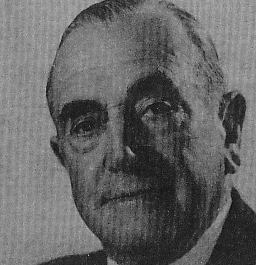 |
In 1908 a young lad watched his father's horse Durbar come home at the head of the NZ Cup Field at Addington. That was Arthur Nicoll's first recollection of a sport that dominated his life until his death in Ashburton last week. Mr Nicoll, in his 80th year, was an influential trotting owner, horseman and breeder and later was to head the NZ Trotting Conference for four years and be awarded an OBE for his services to trotting.
It was hardly surprising Arthur Nicoll pursued this career as his father, H F Nicoll, was one of the greats in the NZ harness world in this time. He initially ran the mighty Durbar Lodge Stud, from which some of the country's top horses hailed, among them Wrackler, Indianapolis and the champion trotter Ordeal. Arthur Nicolls always had a passion for speed. As a teen he would race at the local speedway under an assumed name because his parents did not approve of the sport. His liking for speed was channelled into horses and cars in later life and Arthur Nicoll, it's said, collected more speeding tickets that he cared to remember.
He worked for his father in the early years and bred a few horses which raced in his colours. He did some driving too, but with insufficient success to hit the top. He acquired his first broodmare, Nell Pointer, from his father in 1923 and she left his first winner, Nella Dillon, by Author Dillon. In 1926 he bred Grand Canyon, by Wrack, who he sold as a 2-year-old for 1200gns. In 1928 he bred Tempest who finished a length and a half behind the brilliant pony Silver De Oro in the 1931 Sapling Stakes.
In 1932 he purchased the famed Indianapolis from his father's dispersal sale and under his own colours Indianapolis won his first race at Ashburton and then went on to run second in the Sapling Stakes to Taxpayer. He sold Indianapolis to the late G J Burton, for whom he went on to win three NZ Cups.
In 1932 Arthur Nicoll and his brother Gerald went into partnership and formed Durbar Lodge Ltd. This combination raced with considerable success and among their winners were Wrackler (undoubtedly the country's greatest double gaited racehorse), Raclaim, Arethusa, Ciro, First Wrack, Flying Cloud, Bracken, Vanity Fair, Gerfalcon and others. The partnership was dissolved in 1937, when Arthur took over the operation by himself. In 1938 Arthur Nicoll finished second in the Sapling Stakes with Aldershot, the third time he had filled that position in the prestigious event. Aldershot was another product of Durbar Lodge, being by Wrack out of Trix Pointer. He was therefore a full brother to Wrackler, Raclaim and Arethusa. Aldershot went on to win the NZ Derby for Mr Nicoll but he was sold on the outbreak of war. He sold the Durbar Lodge property itself in 1960.
Arthur Nicoll had a distinguished career as a soldier. He was the commanding officer of the NZEF's Divisional Cavalry in the Middle East and held a Lieutenant Colonel ranking. He was to be awarded a rare Territorial honour, the ED for efficiency, in a long and loyal association with the Army. He later became a life member of the Returned Services Association and was president of that organisation from 1951 to 1955. But it was as an administrator of his favourite sport that most people will remember Arthur Nicoll.
He was first elected to the committee of the Ashburton Trotting Club in 1922 - a position he would hold until he stepped down 53 years later. In 1955 he was voted onto the executive of the NZ Trotting Conference. In the same year he was elected president of the Ashburton Trotting Club when his father passed away. His father had held that position for the previous 49 years. Arthur Nicoll was to be president for the next nine years. In January of 1965 Mr Nicoll was appointed South Island vice president of the NZ Trotting Conference and in May of that year he took over as president on the death of W E Desmond. He held that position until his retirement from the Conference in 1969. During that period Mr Nicoll served on the committee of the Totalisator Agency Board and had two twelve month periods as chairman. During this time TAB concession doubles and betting on overseas races were introduced. He was also prominent on the Inter-Dominion Trotting Council, a series his father helped to introduce.
Mr Nicoll always carried his stopwatch to the races and was renowned for his accuracy in this field. He had a vivid memory of horses and races and apart from those held during the war, had little difficulty in reeling of the winners of the NZ Cup back to 1920. His racing interest apart, Mr Nicoll was a keen amateur photographer, often judging in competitions.
Mr Nicoll, who lived all his life in Ashburton, is survived by his wife Christina and daughter Diana, Mrs Alan Wilks of Wellington.
Credit: Frank Marrion writing in NZ Trotting Calendar 18Sep79
YEAR: 1978
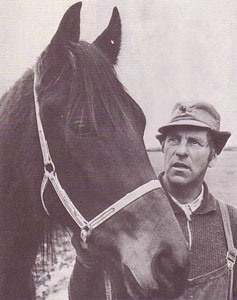 |
The late Graham Holmes was a sad loss to NZ trotting when killed in December in a freak accident while clearing gorse by a fence near his Meadowlands Stud property in Templeton.
Graham who was never suspended in 32 years of race driving, drove over 220 winners, the first with Calando at Motukarara in October, 1947, and the last being Prince Nugent at Ashburton in October, 1978. He also trained over 120 winners. He was a son of Freeman G Holmes and a brother to Freeman L Holmes
Ron Bisman writing in DB Trotting Annual 1979
-o0o-
Templeton studmaster and trainer Graham Holmes died suddenly at his home last Friday night at the age of 50.
Graham, who gained his driver's licence in 1946 at the age of 18 when employed by his father, the late F G Holmes, trained successfully at Templeton for a number of years.
In recent times he has been more prominent as a studmaster, standing the very successful imported stallion Armbro Del. Armbro Del was imported to NZ in the 1960s and has been one of the country's top sires.
Over the past few years, Graham had reduced the size of his racing team to concentrate on his duties as a studmaster, but among the good horses he trained were Co Pilot, who competed successfully in open company, Lord Nugent, Lady Nugent, Charlotte Rose and Gigilo.
Graham is survived by his wife Maureen, son Peter, and two daughters, Robin and Sandra.
Credit: NZ Trotting Calendar 12Dec78
YEAR: 1978
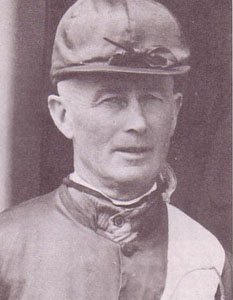 |
Mr Daniel Gladstone 'Gladdy' McKendry, a prominent trainer and reinsman for the better part of 45 years, celebrated his eightieth birthday in Christchurch last week.
Born in Lauriston in 1898, McKendry became involved in horses from an early age through his father who he describes as a 'great horseman'. Dennis, his father, had a 2000 acre farm at Lyndhurst and McKendry began working the horses when about 18 years old. It was just a hobby at that stage but about three years later he was persuaded by a friend, Bert McCormick, to take out a trainer's licence himself. "In those days about all you needed was a recommendation from a JP and this I acquired from Walter Good, a friend of the family who lived closeby," said McKendry last week.
A major problem for McKendry to begin with was finance but with a little help from friends he raised enough to take Epigram, an unsound horse he leased from Fred Jones, to Hutt Park for a saddle trot. With McKendry in the saddle Epigram duly won the event and hence started a long and successful career for him. Apart from his father, other members of the family had a great deal of success with trotters. His brother Dennis trained and drove many winners but the main help for McKendry came from a cousin, Frank.
Burns Night, which he owned himself, was undoubtedly the best horse he ever trained. McKendry's father had considered the Prince Imperial blood to be the best about and it was due to this assumption that McKendry came about buying Burns Night. Mr Norman Mason, from Rangiora, bought a mare named Festival at a dispersal sale of the late E C McDermott along with her colt foal Dunmore, by U Scott. Festival, who cost him £4 was by Sonoma Harvester from a mare by Prince Imperial. Dunmore had been passed around more than one trainer by the time McKendry decided to take him on, and it proved to be a worthwhile venture. "He (Dunmore) was very rough in the legs where he had kicked cart shafts and gone through sheep yards and I had to more or less break him in again. But once I got him going he won five or six races for me," he said.
Mr Mason bred two more foals from Festival by U Scott, Gay Piper and Burns Night. It was when McKendry had Gay Piper in work he decided to buy Burns Night. "I knew Gay Piper was ready to win so I offered Mason about £500 for Burns Night, when he was just a foal, thinking the price would go up if Gay Piper was successful." Burns Night developed into a top flight racehorse winning 16 races and £18,020 for McKendry, including the NZ Derby and NZ Champion Stakes, before fashioning a fine record at stud. Burns Night could possibly have downed Adorian in the 1953 NZ Cup, according to McKendry, if he had not broken down on the eve of the big event. "He had been slightly lame but I lined him up and under the circumstances he did remarkably well to finish fourth," he reflected.
Burns Night showed exceptional class at the NZ Metropolitan Easter meeting in 1953 when he broke two world records in one day. He won the Easter Handicap in 3:22 for the mile and five furlongs and three hours later won the Au Revoir Free-For-All over a mile in 2:02.6, then a world record from a standing start.
McKendry feels that it is very hard to make a comparison between the likes of Johnny Globe, Van Dieman and the other great horses of yesteryear to the present day champions. "Horses might be going faster now but tracks, especially Addington, are a great advantage. Generally the horses are very little, if any, better," he remarked.
McKendry feels that a lot of his training success can be attributed to the galloping pacemakers he used in work. "I'm sure the key to success is the use of a galloping pacemaker, making sure the horse pacing is always in front. This gives them a geat deal of confidence," he said. McKendry has a lot of derogatory remarks to make as regards trainers today. "In my opinion the average trainer today is damn poor and the majority of owners are getting a poor deal," he said. He made mention of the days when a trainer would have a horse ready to produce two top efforts on the one day. Now, he says, the owners are paying out for horses that aren't capable or ready for one honest run. He appreciates the problems for young trainers striving to make progress in the sport these days noting that only the discarded horses from 'name' trainers come their way. In McKendry's opinion Maurice Holmes was the best ever reinsman in NZ and went so far as to say that he was the best in the world. "Maurice would always be off a tight spot before the straight whereas today you see drivers waiting for an opening inside the last 100 metres," he said.
McKendry well remembers his last day on his home course of Methven when he produced No Trumps to win the first race and Pharoah to win the last. "I always lent a horse to the Clerk of the Course for the day and on this particular day he used Pharoah for half the day and then swapped to No Trumps while I got Pharoah ready for the last. Ever since he has gone round boasting about the two winners he rode in one day," McKendry said.
Credit: Rod Gardiner writing in NZ Trotting Calendar 1Aug78
YEAR: 1978
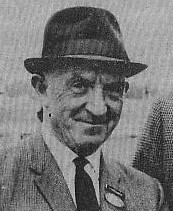 |
Mr O (Orm) Hutchinson, who died in Christchurch recently at the age of 82, was well known to trotting followers throughout the country.
Mr Hutchinson was elected a member of the New Brighton Trotting Club in 1938, a steward in 1940, a member of the committee from 1940 to 1943 and again from 1947 to 1973, and a steward again from 1947 to 1960.
He was Vice-President of the Club from 1943 to 1945 and President from 1945 to 1947. He was elected a Life Member of the Club in 1966.
Mr Hutchinson was elected to the Executive of the NZ Trotting Conference in 1948 and was Treasurer from 1950 to 1965. He was South Island Vice-President from 1966 until his retirement in 1972. He served on the TAB Board from 1965 until 1971.
Credit: NZ Trotting Calendar 27Jun78
YEAR: 1978
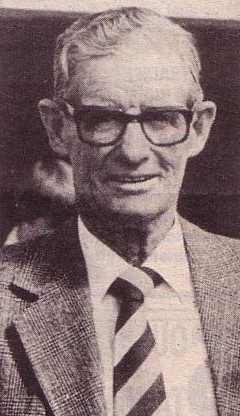 |
There were more eyes on Adjo at the start of the Lance Heron Trotting Handicap on July 22 than normal for the ninth favourite in a trotter's race at Addington. For Adjo's engagement marked the end of the 32 year long race driving career of Ted Lowe, of Hinds, near Ashburton.
Ted turned 65 on June 21 and can not renew his horseman's licence due to the compulsory retirement rule. Adjo did not oblige and allow Ted to go out in a blaze of glory as some other retiring drivers have done, but it was obvious in the driver's room, and at a presentation in the president's room that Ted Lowe commanded much respect regardless of the result of his final drive.
Adjo actually displayed no sense of occasion, breaking badly after 150m and finishing 12th. "He has broken a bone in his leg and I think the track was a bit hard for him. I was restraining him when he broke but it might have been better if I had pushed him into it," Ted said as he changed out of his colours for the last time. His four other drives earlier in the day had produced a somewhat unlucky third (promoted to second) with Single Lord, fourths with Ganelon and Wing Commander, and tenth with Lord George. "If Wing Commander hadn't turned his head to the side just as they let the tape go, I don't think he would have been beaten," Ted said. As it was, Wing Commander battled hard for fourth after making a big run to sit outside the leader with a round to go.
Ted was sad, but philosophical about having to give up driving. "It's an inconvenience. I'll miss out on a lot of fun, but it's the law and there's no use growling about it. Others have had to do it and it's a pleasure to end at Addington on a fine day. But I will miss all my friends out on the track - they're terrific fellows, and there is a tremendous amount of unwritten law and self respect among them," he said.
Ted's major driving victories came in the 1968 NZ Cup and the 1968 New Brighton Cup (both with Humphrey) while he trained Wag to win the 1972 National Flying Pace and the 1973 Stars Travel Miracle Mile. He also owned Cairnbrae trained and driven by Ces Donald to win the 1964 NZ Cup.
Born into a trotting family on June 21, 1913, Walter Edward Lowe did not begin driving until after the Second World War, when he served in the 20th Battalion "with Charlie Upham and several other good trotting men." Ted was among those taken prisoner at El Alamein, on July 15, 1942, and spent most of his prison life in hospital. He was hospitalised for 23 months with pleurisy and pneumonia, which left him with a "bad chest".
In his first race drive, at a Kaikoura Trotting Club meeting at Rangiora on March 23, 1946, Ted finished fourth with Gloxania in the first division of the two-mile Parsons Handicap, won by Ben Adam. Owned by his father, Mr W T Lowe, trained at Hinds by Dave McGregor, Gloxania was the dam of Grouse, whose son Wheatson has taken a mark of 1:58.6 in the United States this year. Later in the 1945-46 season, Ted guided Gloxania to third twice in one day, in harness races on the Oamaru Jockey Club's programme on June 15, 1946. "The placings on Gloxania made me a B Grade driver," Ted recalls. Baadin, a Lucky Jack-Mistral 4-year-old he owned, provided Ted with his first winning drive - a deadheat with Supplement (Dillon Hall-Love Brigade) at the Waikouaiti Racing Club's meeting in January 1, 1948. "I was then an A Grade driver, but I didn't do much driving after that, until I took up training in the 1950's," he said.
Trotting records show Ted Lowe as retiring with 157 winning drives to his credit (not including any seasons when he had less than three wins) and 223 training successes. His best season was the 1962-63 term. He was leading owner with 28 wins and £16,940, eighth on the drivers' list with 21 wins and fourth highest trainer with 22 wins. Of the 28 races won by Lowe owned horses that season, Cairnbrae contributed eight, Grouse and Peel six each, and Urrall and Lyndhurst (Captain Adios-Gloxania) three each. Cairnbrae was trained by Lowe himself for his first three wins in 1962-3, then went to Ces Donald, who prepared him for another five victories, in succession.
"Humphrey was the best all round horse I drove - he could sprint and stay," Ted says of the horse which gave him his most notable driving success. "When I got hold of him the game was easy - good horses make good drivers. I was never any great shakes as a driver, but I could hold my own - with horses I knew."
Ted says the most noticeable change in racing over the years is the move towards shorter races nowdays. "Races are run in more of a rush. You used to be able to sit back and wait like you can still do to a certain extent on the bigger courses like Ashburton and Methven. I don't think the change has improved the horse," he said.
Ted now intends to put more driving opportunities to help the way of his stablehand Paul Young, while Doody Townley will continue to handle West Street "when it suits him."
-o0o-
Extract from NZ Trotting Calendar 26March85
Ted Lowe, who died in Ashburton last week, was one of NZ's best known amateur horsemen. From his farm near Hinds in the Maronan district of Mid-Canterbury, Ted Lowe produced a string of top class pacers over the years, and numbered two NZ Cups to his credit. His first Cup victory came in 1964 with Cairnbrae, trained and driven by the late Ces Donald, but in 1968 Ted had his own moment of glory as trainer-driver of Humphrey who took out the premier staying event.
Many Lowe horses were named after areas in the Mid-Canterbury district, and a drive along the back roads is like a roll call of many of his early winners - Lyndhurst, Lauriston, Mitcham, Barrhill etc.
Better known winners of recent times to race in the Lowe colours include the former NZ mile record holder Wag (1:57.2) who set his mark in winning the then Stars Travel Miracle Mile (now Pan Am Mile), Dundas, Atanui, Grouse, Corwar, Stortford Lodge, The Raider, Urrall, Pun, Wing Commander, West Street, Templar and Siouan to name a few.
Ted Lowe had been in ill health for a good number of years, largely caused by the long period he spent as a prisoner of war in Norway during the Second World War, being captured at El Alamein when serving with the 20th Battalion.
Few major races escaped Lowe representatives, though he was never to produce a Derby winner. If sentiment were to rectify this state of affairs, Samson would have taken out the 1985 Great Northern Derby at Alexandra Park just two days before Ted's death. Samson was favourite for the event, on the strength of his brilliant lead-up form, but unfortunately went off-stride soon after the start and took no part in the race.
Ted also took a very active role in trotting administration, serving the Trotting Owners' and Trainers' Association in Mid-Canterbury, and the Ashburton Trotting Club. He joined the Ashburton Trotting Club committee in 1958 after several years as a steward, was president from 1977 to 1980, then was re-elected to the committee again in 1983 after three years as immediate past president.
Until his retirement from race driving at the age of 65, Ted did much of his own driving, but encouraged young reinsmen in his employ. George Adamson drove many winners in the Lowe colours, and in recent seasons Paul Young has proved a highly successful stable reinsman.
Ted Lowe is survived by his wife Lillian and six step-children. He was 71 at the time of his death.
Credit: Rod Carr writing in NZ Trotting Calendar 1Aug78
YEAR: 1978
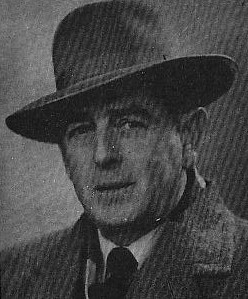 |
Mr Andy Wilson, a well known figure to most NZ trotting followers, first as secretary of the Wyndham Trotting Club for many years, and then through his association with such outstanding racehorses as Tactics, Cannelle, Adroit, Noodlum and Olga Korbut, died in Christchurch, last week at the age of 75.
As secretary of the Wyndham Trotting Club from 1934 to 1965, Mr Wilson was responsible for several major innovations in trotting. Most noteworthy perhaps was the withdrawal system, used to this day, which Mr Wilson's Club sponsored at the 1938 Annual Conference in Hamilton. Mr Wilson served as the Wyndham TC's delegate to Conference on several occasions, and another notable remit he passed for his club was one calling for more extensive control by Stipeniary Stewards. This was passed at the 1946 Conference in Wellington.
Another remit initiated by his club was to introduce qualifying trials, but in spite of support from the Southland Trotting Owners, Trainers and Breeders Association, this remit failed at the time. When sponsored by th NZ Trotting Conference, a couple of years later, this remit was passed.
During his years as secretary of the Wyndham TC, Mr Wilson and the club gave considerable thought to using the mobile starting barrier, and he corresponded with the Smith-Stanley Gate Syndicate in America as far back as 1943. The Wyndham TC was to be the first to use the mobile barrier in Southland, on February 30, 1968. The Wyndham Club was also the first outside Canterbury to stage a regular 2-year-old event, the NZ Kindergarten Stakes. That race is still one of the major juvenile events on the trotting calendar.
Mr Wilson's interest in breeding began in 1945 when he bought the 14-year-old Grattan Loyal mare, Nell Grattan. Her second foal for Mr Wilson was Tactics, a highly performed Light Brigade mare. From her, he bred Adroit, Guile, Astute and Deft, who was to later leave one of NZ's all time great pacers in Noodlum, and the outstanding filly Olga Korbut. Mr Wilson, who bred standardbreds in partnership with his wife, Ann, was one of the most respected men in trotting, and his efforts on behalf of the sport were many.
He was also the secretary of the Wyndham Racing Club, and in his capacity as a company secretary and accountant, served in many other fields. He served a period as town clerk in Wyndham, where he was born, was secretary of four rabbit boards and four dairy factories and was deputy chairman of the Wyndham Town Council. Mr Wilson saw home service with the Air Force during the Second World War and was a member of the Masonic Lodge.
An active sportsman, he played rugby, bowls, cricket and golf and was president of the Burnside Bowling Club in Christchurch in 1969. He was a foundation member of the Southland Owners, Trainers and Breeders' Association and served as president on that body. He also served on the Executive of the Canterbury OTB Association following his move to Christchurch in 1965 following his retirement.
Credit: NZ Totting Calendar 19Sep78
YEAR: 1977
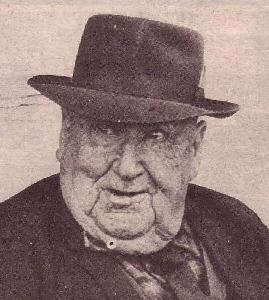 |
An unraced or lightly raced mare from a good producing family is the best prospect to leave a top racehorse, in the opinion of Mr John Johnston who has been breeding standarbreds in the Oamaru district for 50 years.
Cardinal King, who made a clean sweep of the Inter-Dominion series, ace sprinter Master Dean, and a score of winners sold at the National Yearling Sales, all bred by Mr Johnston support his claim.
Mr Johnston (73), now living with his sister at Pukeuri is currently maintaining his interest in trotting through Rustic Widow, a Bachelor Hanover-Rustic Lady mare whom he has leased to the 16-person Berts Syndicate.
Mr Johnston's father, Joseph, bred Clydesdales in England and NZ, and at one stage had 20 stallions. His grandfather, John, and great-grandfather, Wilson, bred Clydesdales and thoroughbreds in England.
Information, the dam of Cardinal King, had a throat affliction that caused her to choke when at speed. Lent to Mr Johnston by Bob Ludemann of Kauru Hill, she left Cardinal King to a mating with First Lord, one of several stallions Mr Johnston has stood at stud. Sold as a yearling for 150gns to the Wederell brothers, Stewart of Dunedin, and Fred, of Timaru, Cardinal King won 10 races, including the 1967 Olliver Handicap, before he was sold for $40,000 to patrons of Stanley Dancer's New York stable. Cardinal King immediately made an unequalled clean sweep of the International Series - International, Good Time and National Championship Paces - at Yonkers raceway in 1968.
Cardinal King's grandam, Waikaura, and third dam, Misty Morn, were like his dam, unraced. Waikaura, who produced the first two-time Inter-Dominion winner and dual Auckland Cup winner, Captain Sandy, was bought originally by Bob Ludemann as a hack. He gave up the idea when he found she had to be broken in each time she was left for a few days. Misty Morn was a twin of poor constitution and also used as a hack. Mr Johnston had a close association with Captain Sandy. He stood his sire, Sandydale, and he stayed overnight with the vicious Waikaura when Captain Sandy was born to ensure she allowed her foal to suckle.
In 1953 Mr Johnston recommended Captain Sandy to Adelaide trainer Dinny Nolan, who was looking for Inter-Dominion material. Captain Sandy, then 10, had been returned to his breeder, Mr Ludemann, after winning the Inter-Dominion in Melbourne two years earlier when held on lease by Jock Bain, the Oamaru trainer. Nolan bought the gelding for 525gns and won the 1953 Grand Final in Perth at the expense of the favourite, Ribands.
Master Dean is out of Gay Sheila, a Logan Derby mare who did not reach the race track, like her dam, Madam Gay. Mr Johnston bought her after she had left two foals, Flaunt and Smart Play, for Don Nyhan, of Templeton. She had been sent to stud as a 3-year-old. Rauka Lad (Easter Cup and Gore Invitation Stakes)has been another big winner from this family in the past decade.
Master Dean, winner of the NZ Free-For-All, Olliver Handicap, Miracle Mile, Benson & Hedges Flying Mile and Clarendon Free-For-All last season, has a best winning record of 1:57.5 and finished second in 1:57.3. He has seven wins from 10 starts over a mile in NZ. The Honest Master entire, who was foaled on February 3, was several months behind other yearlings when offered at the 1973 national sales. He was passed in at $1,100, and Mr Noel Bolase, of Christchurch, then obtained a lease option for $100. After further discussion when Master Dean was being broken in, Mr Borlase bought him for $400 with two $200 contingencies from his first two wins. Master Dean has won 16 races and $65,245. Mr Johnston sold Gay Sheila, the dam of Master Dean, to Mr Noel Dunston, of New South Wales, in 1975. She slipped the foal she was carrying by Lord Dale, and is in foal to Deep Adios, sire of Paleface Adios.
Mr Johnston sold Village Logan, the dam of three 2:00 pacers, for 170gns at the 1957 national sales. Village Logan (Logan Derby-Blue Banner) who had her racing restricted after she foundered, opened her account at the age of 10 when she won twice trotting at the Manawatu meeting. Her 2:00 progeny are Emory Wheel, Bell Logan and Logan Son. Her first foal, William Gunn sired a winner last season, Gunn Tartan. Village Logan is one of 26 individual winners Mr Johnston has sold through the national sales.
Another pacer he bred was Expensive, who won four races for Laurie Smillie, of Pleasant Point, during the 1946-47 season. Expensive was later bought by Noel Simpson and won a United Handicap at Auckland at odds of 70 to 1 after being off the winning list for three years.
The first stallion Mr Johnston stood was the Victorian-bred Four Chimes in the mid-1920s. Four Chimes sired the 1916 NZ Cup winner, Cathedral Chimes, who in turn stood at Mr Johnston's property. Cathedral Chimes got Ahuriri, the NZ Cup winner of 1925 and 1926, and Kohara, who was successful in the next year. Four Chimes figures as the grandsire of triple NZ Cup winner False Step.
Sandydale, the American importation, was bought by Mr Johnston in the 1940s from Mr George Youngson, of Gore. The son of Abbedale has had a significant influence on breeding. Besides Captain Sandy and the dam of Cardinal King, Sandydale sired the dam of Johnny Globe (unraced Sandfast), the great pacer and sire who left another champion in Lordship. Sandydale is the maternal grandsire of Stanley Rio, Horse of the Year last season,when he became the first horse to win the Inter-Dominion Grand Final and the NZ Cup in one season.
-o0o-
NZ Trotting Caledar 1985
John Johnston, who successfully bred standardbreds in the Oamaru district for 60 years, died recently at the age of 82.
Mr Johnston retired from breeding horses 12 months ago when he sold the broodmare Rustic Widow. He bred the big winners Cardinal King and Master Dean and stood several stallions including Sandydale.
Cardinal King made a clean sweep of the three race International Series at Yonkers Raceway, New York, in 1968. He was sold by Mr Johnston for 150 guineas as a yearling. Cardinal King was by First Lord, whom Mr Johnston stood. Master Dean won 16 races, including the 1976 NZ Free-For-All, after he had been sold by Johnston as a yearling for $400 and $200 contingencies from each of his first two wins.
Mr Johnston had a close association with Captain Sandy, the two-time Inter-Dominion champion. He stood his sire, Sandydale and stayed overnight with Captain Sandy's dam, Waikura, a vicious mare, to ensure her foal could suckle. Mr Johnston recommended Captain Sandy to Dinny Nolan in 1953 when the Adelaide trainer was on the lookout for Inter-Dominion material. Captain Sandy, then ten, had won the Inter-Dominion Final in Melbourne in 1950 for Oamaru trainer, Jock Bain who had him leased. He had subsequently been returned to his Kauru Hill breeder, Bob Ludemann. Nolan bought Captain Sandy for 525 guineas and won the 1953 Final in Perth.
Mr Johnston, who lived with his sister at Pukeuri in recent years, previously had stables at Waikaura. He began assisting his father, Joseph, who bred Clydesdale horses in England and NZ. His grand-father, John, and great-grand-father, Wilson, bred Clydesdales and thoughbreds in England.
The first stallion Mr Johnston stood was the Victorian-bred Four Chimes in the 1910s. Four Chimes sired the 1916 NZ Cup winner Cathedral Chimes, who in turn stood at Waikaura. Cathedral Chimes left Ahuriri, winner of the NZ Cup in 1925 and 1926, and Kohara, who won the next year.
Mr Johnston bought American-bred Sandydale from George Youngson of Gore in the 1940s. Besides siring Captain Sandy and the dam of Cardinal King, Sandydale sired the dam of Johnny Globe, who left the champion racehorse and sire Lordship. He is also the maternal grand-sire of Stanley Rio, winner of the NZ Cup and Inter-Dominion Final in Brisbane in the 1976-77 season.
Mr Johnston sold 26 yearlings through the National Yearling Sale which he supported from its inception in 1944. He sold Village Logan, dam of 2:00 pacers Emery Wheel, Bell Logan and Logan Son, for 175 guineas at the 1957 sale.
Credit: Taylor Strong writing in NZ Trotting Calendar 6Sep77
YEAR: 1977
A E LAING
Mr A E Laing, who died in Christchurch at the weekend, was a prominent figure in trotting administration for some 30 years.
He became a steward of the New Brighton Trotting Club in 1947, was on the committee of that club from 1953 to 1973 and served as president from 1961 to 1963.
He was also on the executive of the New Zealand Trotting Conference for several years, and served as honorary treasurer to the conference for a time.
Credit: Press 6July 1977
| << PREVIOUS | 1 2 3 4 5 6 7 8 9 10 11 12 13 14 15 16 17 18 19 20 21 22 23 24 25 26 27 28 | NEXT >> |